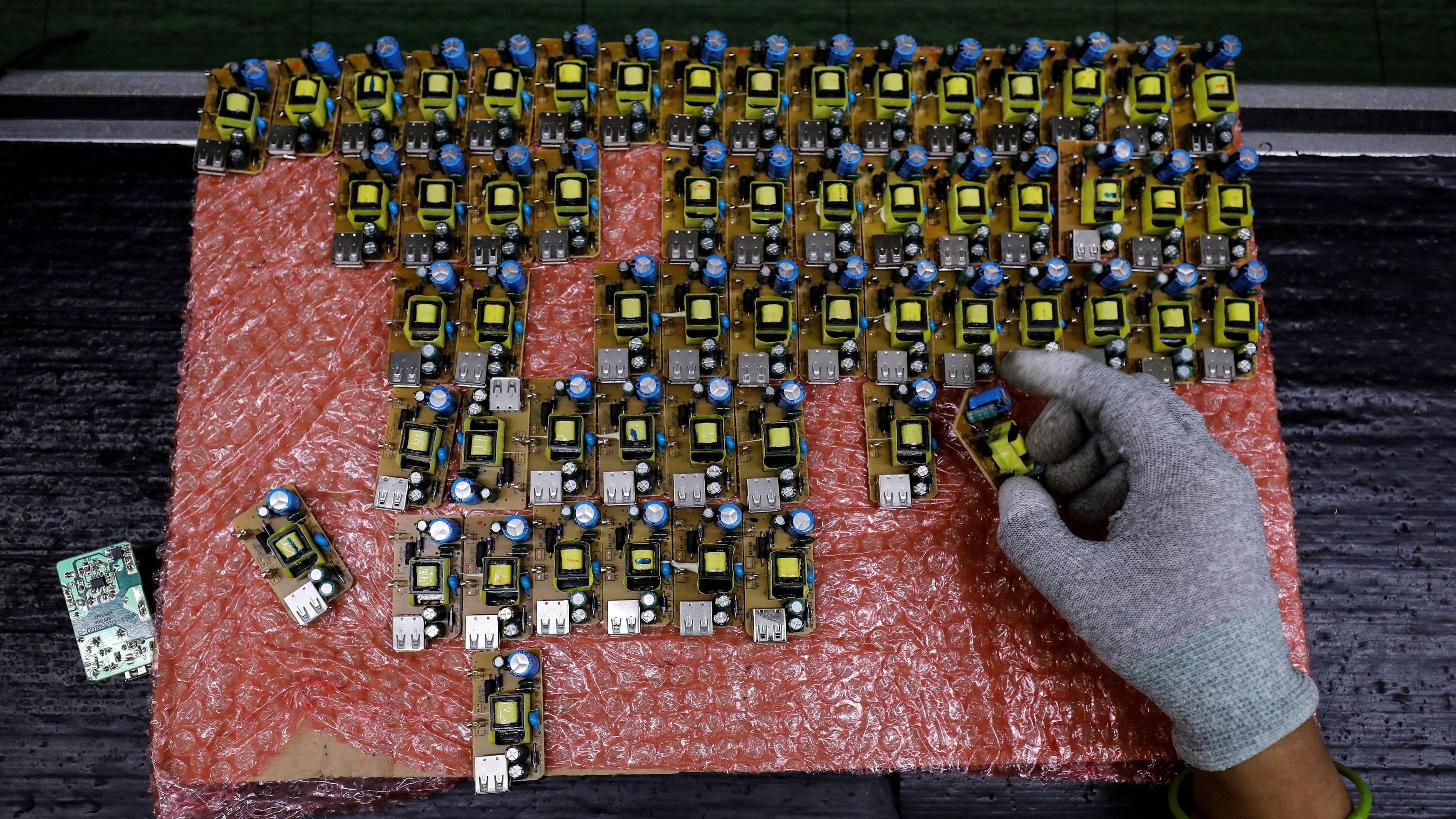
A worker arranges battery charger circuit boards at a mobile phone battery manufacturing plant in Noida, India on October 12, 2018.
Credit: Reuters Photo
New Delhi: The Production Linked Incentive (PLI) scheme has boosted local manufacturing and exports of mobile phones and telecom equipments in the recent years but India still faces trade deficit in the segment although it has narrowed significantly from Rs 68,000 crore five years back to Rs 4,000 crore in the financial year ended March 2024, official data showed on Wednesday.
As per data released by the Ministry of Communications, India’s import of telecom products stood at Rs 1.53 lakh crore in FY 2023-24, while the country exported telecom equipment and mobiles worth Rs 1.49 lakh crore during the year.
Telecom equipment sector is being presented by Prime Minister Narendra Modi government as one of the most prominent success stories of Make-in-India and PLI schemes.
It has emerged as a key driver of the exports from the country. The value of exports of mobile phones from India increased to Rs 1,28,982 crore in 2023-24 from Rs 1,367 crore in 2017-18 and Rs 1,556 crore recorded in 2014-15.
On the other hand, the value of imports of mobile phones declined from Rs 48,609 crore in 2014-15 to Rs 7,665 crore in 2023-24.
India from being a large importer of mobile phones in 2014-15, when only 5.8 crore units were produced in the country, while 21 crore units were imported, in 2023-24, 33 crore units were produced in India and only 0.3 crore units were imported and close to 5 crore units were exported, the Ministry of Communications said in a statement.
Despite the massive increase in local production of mobile phones India continues to face a trade deficit in the segment because of the reliance on imports for components.
However, the ministry claimed that the PLI scheme has helped in reducing India’s dependence on imported telecom equipment.
“By encouraging local production, the PLI scheme has significantly reduced the country’s reliance on imported telecom equipment, resulting in import substitution of 60% and India has become almost self–reliant in Antennae, GPON (Gigabit Passive Optical Network) and CPE (Customer Premises Equipment),” it said.
“Reducing import dependency has thereby enhanced national security and fostered self-reliance,” the ministry added.
The ministry further noted that in the last five years, the trade deficit in telecom (both telecom equipment and mobiles put together) has reduced from Rs 68,000 crore to Rs 4,000 crore and both the PLI Schemes have started to make Indian manufacturers globally competitive, attract investment in the areas of core competency and cutting-edge technology.
“It has transformed India’s exports basket from traditional commodities to high value-added products,” it said.
Two PLI schemes are targeted at the telecom sector. One is for ‘large scale electronic manufacturing’ that covers the manufacturing of mobile phones and its components and the other scheme is for manufacturing of ‘telecom and networking products’.
Within three years of the introduction of the scheme telecom equipment production has exceeded Rs 50,000 crore, out of which Rs 10,500 crore exported. Telecom PLI scheme has attracted an investment of Rs 3,400 crore.
“India has been importing telecom gear for many years, but the balance has changed due to the Make-in-India and PLI scheme, leading to the production of equipment valued at over Rs 50,000 crore in the country,” the ministry said